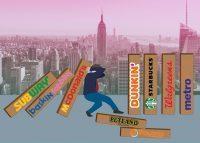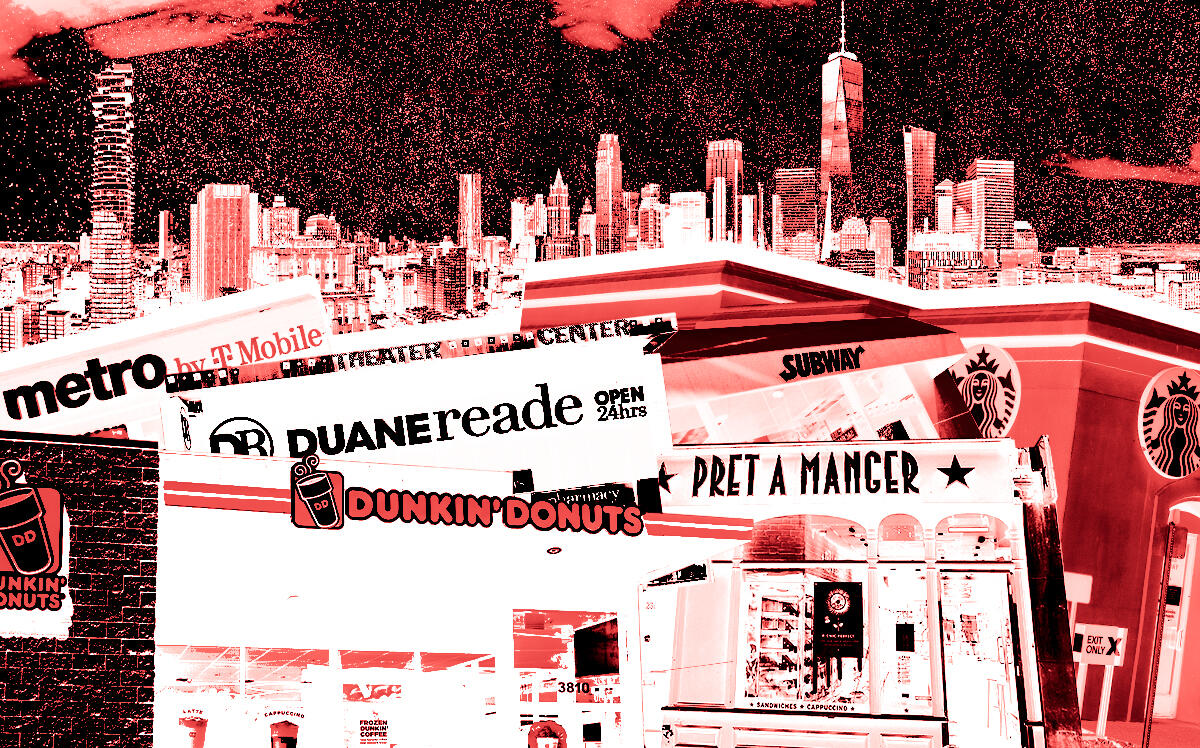Chains are not taking over New York City. Even its most prolific retailer, Dunkin’ Donuts, grew by just 0.8 percent last year, an annual tally found.
While the donut and coffee chain added five locations to bring its city-leading total to 620, the number of chain stores in the city grew only 0.3 percent, according to the Center for an Urban Future’s State of the Chains report.
Chain locations did increase 2.7 percent from 2020 to 2021, but that was largely a rebound from a pandemic retrenchment, not the chain store takeover of New York that advocates of commercial rent control have predicted for decades.
Chains still aren’t close to pre-pandemic levels in the city. As of November, there were nearly 800 fewer chain stores in the city than in late 2019, a decrease of 10 percent.
Many major retailers have contracted in the city since the pandemic. More than half of the retailers featured in 2019’s State of the Chains have fewer locations than three years ago.
Eight of the largest retailers have fewer stores than in 2019 and 11 percent of the chains in that year’s report have left altogether. Seven of the top 10 from the first report, in 2008, have fewer stores today.
Read more



Commercial rent control legislation has been periodically introduced in the City Council as a way to keep independently operated businesses in place, because landlords are seen as favoring deep-pocketed chain retailers.
But no bill has ever come to a vote. The real estate industry has argued that rent control could cause landlords to hold out for a chain tenant rather than take a chance on an individual entrepreneur that it might be stuck with forever. Chain stores’ failure to gain ground has also undermined the rationale for the legislation.
To the extent that New Yorkers run on any chain, it’s Dunkin’. The brew shop has led in total locations for all 15 Center for an Urban Future reports, although it has fewer than before Covid. Starbucks is a distant second, with barely half as many locations (316) as its cheaper rival.
Some of the chains adding stores in the past year were Tumi (+11), Chipotle (+10) and Wingstop (+9).
The biggest contraction was by Duane Reade, which has 22 fewer stores than the 249 it had a year ago. Metro by T-Mobile ranked second in net locations lost with 16, and now has a city-leading 173 fewer since 2019.
Several food chains had double-digit losses, shedding stores as office employees continued to stay home much of the time. Subway and Pret A Manger both closed more than a dozen stores.
For the same reason, Manhattan had the largest drop in chain store locations — down 14.4 percent since 2019. Staten Island had the smallest reduction over that time, 1.5 percent.
In the past year, Brooklyn added 33 chain store locations, the most among the boroughs. The Bronx, meanwhile, dropped the most, 17.
In addition to the pandemic, the report cited online shopping as a reason chains have stagnated in the city. Food retailers have bucked the trend.
The report’s authors counted stores from Nov. 8 to Nov. 29 for the report.
